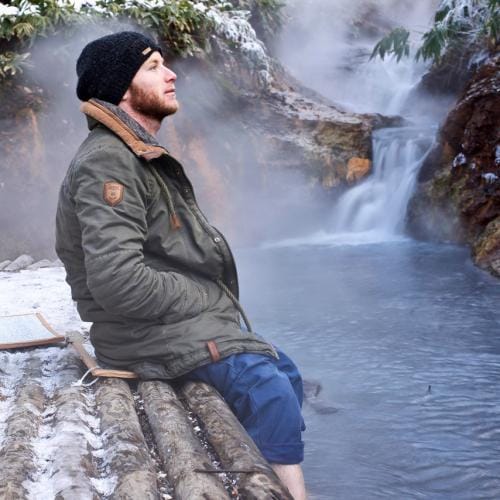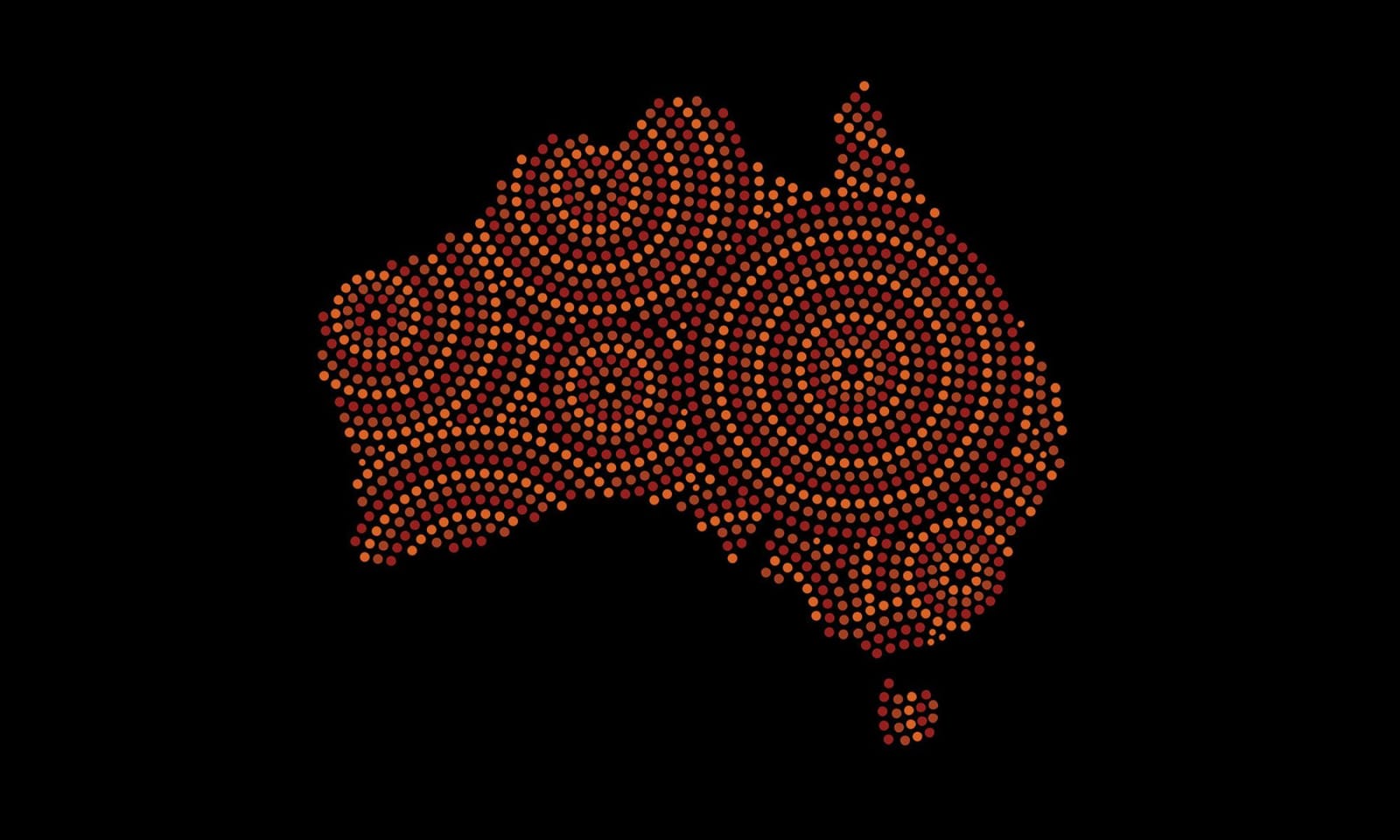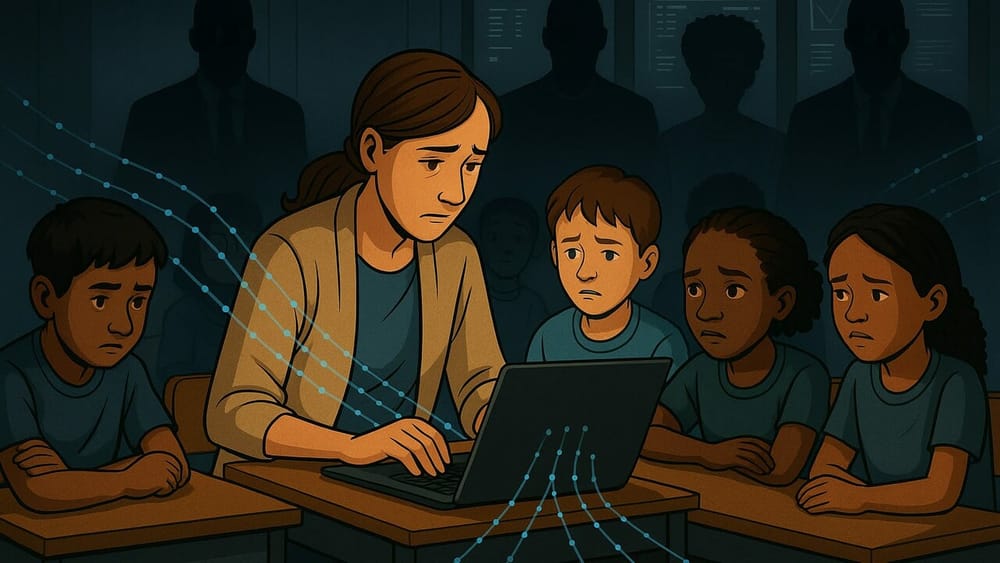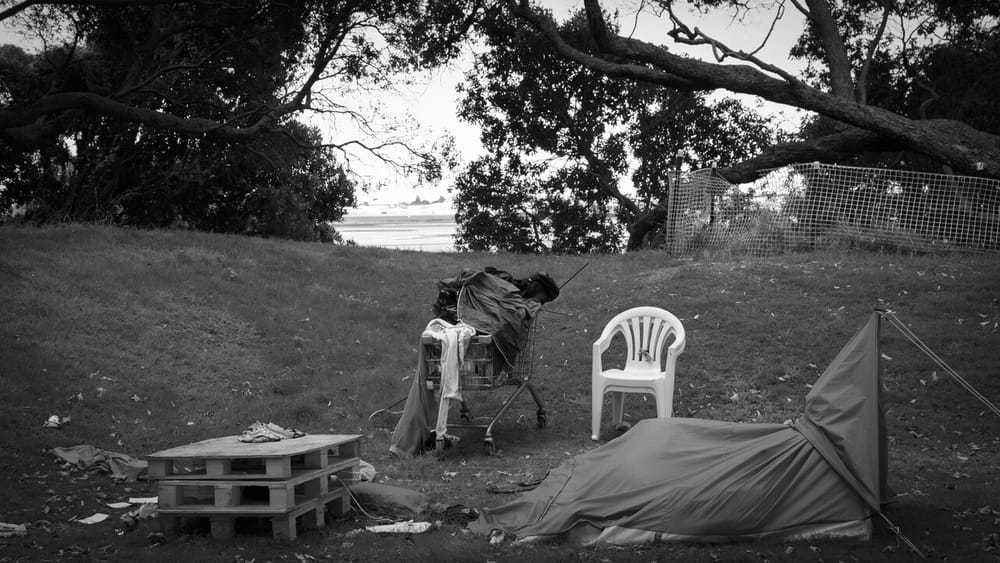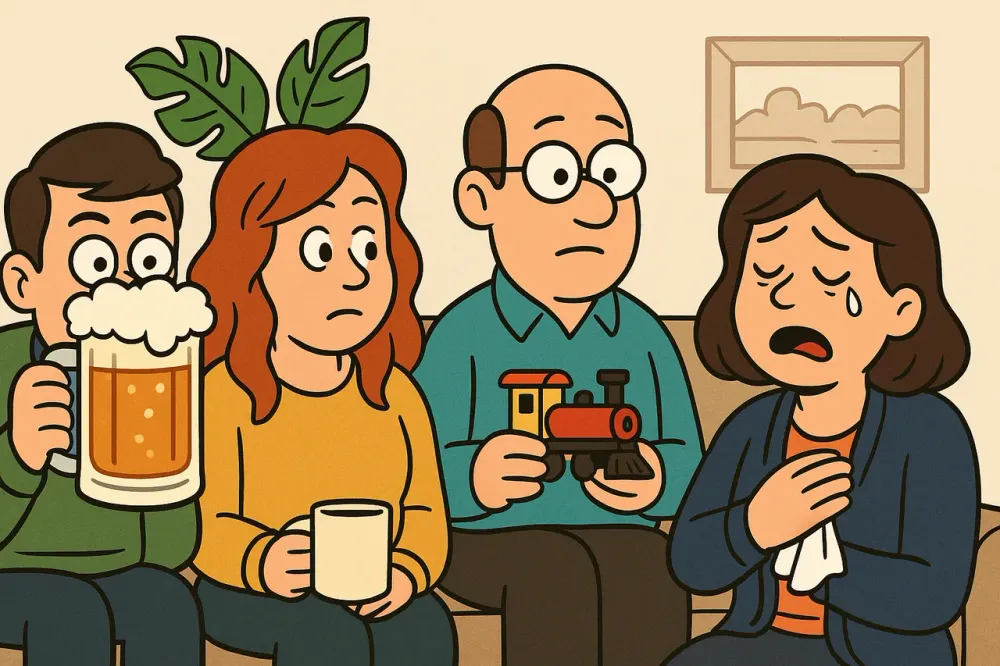Editorial Note
- Please be aware that this article contains references to deceased Aboriginal Australian persons.
- Terminology: This article uses several terms that relate to the Aboriginal and Torres Strait Islander people of Australia, including Indigenous Australians, Indigenous, First Nations, Aboriginal and Aboriginal Australian. These terms are respectfully used interchangeably in accordance with historical references and modern practice. The terms ‘traditional language’, ‘Indigenous language' and ‘Indigenous Australian language’ refer to all languages present on the Australian continent prior to the arrival of Europeans.
On December 5, 2020, immediately prior to the final Tri Nations rugby fixture at Bankwest Stadium in Sydney, the Australian public witnessed a groundbreaking moment. Seventeen-year-old Olivia Fox, a woman descended from the Wiradjuri Nation, performed the Australian national anthem in both English and Dharug, a local Indigenous language. This was the first time at any national sporting event in Australia that the national anthem had been sung in an Indigenous Australian language. In stunning addition, the entire rank of Wallabies—Australia’s national rugby team—joined in, confidently singing the Indigenous Dharug lyrics, as they had practised the week prior.
This catalytic moment was soon celebrated as nation-changing—maybe even a paver laid on the path to reconciliation between Indigenous and non-Indigenous Australians. It had the essence of South Africa’s embrace of its new, Xhosa national anthem at the 1995 Rugby World Cup by its predominantly White team—a symbolic renouncement of apartheid. It was a moment that finally put Australia on par with its neighbour New Zealand where since 1999, it has been conventional practice for Kiwi national teams to recite the first verse of their national anthem in both Māori and English, a practice now universally embraced in Aotearoa.
However, despite this warmer paragraph in the annals of Indigenous Australian history, there is a notable, and tragic, contrast to its like examples in South Africa, New Zealand and indeed many other nations.
Who can talk the talk?
It is almost certain that no member of the crowd at Bankwest Stadium understood a single word of the Dharug verse. This is because Dharug—a traditional language of the Eora people, the dispossessed Indigenous inhabitants of the Sydney region—is a dormant language, being held from the slippery precipice of extinction by a tiny band of elders and scholars.
The expected reflex here is to think the general public ignorant and the Australian Government inept in recognising, revitalising and adopting the language, and such a reaction would not be completely baseless. There seems to be little enthusiasm in Australia for learning Indigenous languages, nor much for the public adoption of traditional language words or phrases, such as the officially recognised Māori you find in New Zealand.
It should come as no surprise then that, despite having an Indigenous population of approximately 800,000, all of Australia’s remaining 159 Indigenous languages are endangered. According to the National Indigenous Languages Report of 2019, only nine traditional languages have more than 1,000 speakers, and none have more than 5,000. The custodianship of Indigenous language proficiency equates to approximately 10 percent of the Australian Indigenous population, or just 0.3 percent of the total Australian population. This rate has steadily declined over the past 25 years.
So how did Australia’s Indigenous languages find themselves in such a moribund state? And why has revitalisation and adoption been such an arduous and seemingly unobtainable concept? The answer to the first question can be traced to the moment the British stepped foot on Australian soil, while the second is far more complex, but a clue lies within the plurality of terms used already: people(s), language(s), nation(s).
A nation of nations
If you look at this map constructed by the Australian Institute of Aboriginal and Torres Strait Islander Studies (AIATSIS), you will notice that the Australian landmass is carved into smaller land groups. These are the Indigenous Australian nations prior to colonisation—over 390 separate language and tribal groups as unique and distinct from each other as the nations within the Middle East or Europe. This is how Indigenous Australians understand their country. It is the instant rebuttal to anyone who asks what the ‘Aboriginal Australian language’ is; there isn’t one, but instead a profusion.
The aforementioned Olivia Fox is Wiradjuri, a nation that exists in the central part of modern Australian state New South Wales, where the language is eponymous. The Olympian Cathy Freeman and popular singer-songwriter Jessica Mauboy are of the Kuku Yalanji Nation, located in the far north of Queensland, where the traditional language is known as Guugu Yalandji. Although these two languages are descendent of a common language family known as Pama Nyungan, traditional speakers would be as likely to understand one another as a German would a Spaniard. Therefore, there is no seat at the solutions table for requesting a common language. That is tantamount to colonising the modern Middle East and ordering non-Arabic nations to forsake their historic languages and adopt Arabic for the sake of the colonisers’ ability to learn. However, such an ignorant demand for a common language is not unprecedented and was a function of the 19th and 20th century that dealt a near coup de grâce to all Indigenous languages in Australia.
A hidden extinction
On May 23, 2002, Australia lost two national treasures in one moment. ‘Big Bill’ Neidjie of the Gaagudju, or Kakadu, Nation was the last speaker of its eponymous language.
Unfortunately, it was only to initiated Gaagudju individuals that stories, customs and law—memes inherited through traditional language—could be passed. If younger generations had not spent sufficient time “connected to country,” they could not receive initiation in accordance with traditional Gaagudju law. Thus, upon Big Bill’s passing, Gaagudju became a ‘sleeping language.’ Although synonymous for extinct, the term ‘sleeping’ is used in contemporary linguistics as acknowledgement that it is always possible to revive elements of a language through past mediums. For example, in this 1988 National Geographic documentary on Kakadu National Park, Bill Neidjie and other elders can be heard conversing in Gaagudju.
Recently, it has mostly been the cosmetic appeal of Western economy and civilisation—wherein traditional language is seldom taught and used even less—that has lured younger Indigenous generations from their communities prior to becoming proficient in traditional language. But the voluntary nature of this migration away from culture has not always been so. There are many documented, septic incidences and periods in Australian history where Indigenous Australians were forcibly removed from their nations and subsequently coerced into forsaking their traditional culture in order to adopt the Eurocentric customs of White Australia. In his book Aboriginal Australia, Richard Broome outlines a crude tactic employed by British Admiral Arthur Philip, the first Governor of New South Wales, after a year of settlement in Sydney Cove:
After months passed, Phillip’s anxiety to engage the Eora turned to urgency as crops wilted in alien soils. Food shortages made it imperative that he learn more of the country’s resources. However, Eora avoidance made this impossible. After a year, Phillip determined to kidnap several Eora, teach them English, and make them intermediaries between the two races. (Broome, 2019, p. 22)
The most infamous cases of forced removal from culture were the collection of policies and practices known as ‘child removal.’ Under various government acts, representatives of the Australian states and territories were able to gain ubiquitous legal guardianship over Indigenous children. Ostensibly conducted out of a perverse notion of protectionism, they are commonly known as—and will forever be remembered as—the ‘stolen generations.’ Although the exact number is debated, it has been estimated that up to 100,000, or one in three, Aboriginal Australian children were forcibly removed from their parents and communities by government and religious authorities between 1910 and 1970.
In order to assimilate them into Anglo-Australian culture, children were placed in religious missions or fostered by non-Indigenous households. As a part of assimilationist ideals, Indigenous children were reportedly barred from, or punished for, using their traditional languages as a barbaric means to expedite the conversion of their lexicon to English. A significant amount of family lines were broken causing a severe decline in intergenerational transmission and usage (the language vitality measure used by UNESCO).
Discriminatory assimilation in the 20th century has been the defining blow to the health of Indigenous languages, and revitalisation suffers due to their continued absence in contemporary Australian society. Cases such as that of Bill Neidjie highlight a precarious reality: the preservation of so many languages, all rich in story and significance, depend substantially on the survival of just a few individuals. But even if we understand this vulnerability, do we truly understand the cultural significance of the seemingly inevitable loss?
Beyond simple words
Whilst descriptive and refined, Early Modern English—the oldest form of the English language understandable to most speakers today—developed in written form from the French- and Germanic-influenced Middle English of the late 15th century. This means our form of communication is still in its adolescence in contrast to many other written world languages, such as Chinese (3,270 years), Greek (3,400 years) and Tamil (5,000 years). But as Bruce Pascoe outlines in his book Dark Emu, it is possible that Indigenous Australian languages are between 40,000 to 60,000 years old which reflects the arrival of Aboriginal people to the modern Australian landmass. As Pascoe highlights, even if traditional languages were only 10,000 years old, it would still make them the oldest surviving oral languages in the world. It can therefore be argued that a language so ancient is too steeped in custom, story and spirituality, and too connected to the natural environment that it was formed within, for its totality to be directly translated. Pascoe writes:
If we attempt to understand Indigenous philosophy it has to begin with the profound obligation to land . . . there is no separation between the sacred and the non-sacred as all actions are steeped in religious purpose. The mere act of burning grass has a specific story attached to it, a story that directs the need and benefits of the action in law. (Pascoe, 2014, p. 127)
Here, Pascoe is saying that Indigenous vocabulary is sourced tremendously from custom, and custom is almost entirely dependant on it. These languages are not just words but instead, intricate systems of knowledge.
Many traditional vocabularies are also abundant with unique words such as one Northern Territory language, the Yanyuwa, which is sustained by just 39 individuals as of the 2016 census. According to Melbourne’s Monash University, the language has “ . . . a word for sunbeams shining through the water, for instance, and another for the shadows of clouds passing over the water’s surface. [Yanyuwa also has] 27 different words for dugong, which is one of their traditional food sources.”
Indigenous Australian languages have been seldom acknowledged for their age or continuing use. This is likely due to not only their diminishing nature, but also the fact that they existed only in oral form prior to colonisation. If they are not prioritised in future linguistic research, their esoteric idiosyncrasies and nuance will remain largely unmapped, and there are few remaining qualified cartographers. Some traditions have received rudimentary translation into English, such as the stories and spiritual significance of The Dreaming—the Indigenous Australian cultural worldview and interpretation of creation. But to have tradition and custom of such magnitude only available in a foreign language is similar to being a guest in a stranger’s home—they may offer for you to stay forever, and welcome you to make the fullest use of anything available in the house, but it is always known, tacitly or otherwise, that it is not your home. This is how identity is lost and never truly found again.
Avoiding repeated faux pas
For the sake of national health, the bottom line is clear: Australia needs to prioritise Indigenous language revitalisation and proficiency. It begins with recognition and continues with consultation. A family is not healthy if even one of its number is excluded, regardless of the others’ vitality.
Once this reality is recognised and understood, progress can only be made as each Indigenous community prioritises language revitalisation themselves. Of all past and present initiatives focused on the wellbeing of Indigenous Australians, the root cause of any failure can almost always be traced back to one common denominator: lack of Indigenous consultation. This often repeated mistake, regardless of intention, is an implicit declaration of Western superiority, also known as “we know best” syndrome. Such thinking has existed from the moment Europeans colonised Australia, and has been the downfall of successive welfare programs. In Aboriginal Australians, Richard Broome outlines the first in a long line of failures. In 1838, the British Government established an ‘Aboriginal Protectorate’ after being lobbied by a humanitarian group who reviewed and condemned the treatment of Indigenous people, but the initiative was doomed to fail from its very conception. Broome writes:
The project began with great hopes and the considerable outlay of £20,000 in the first four years—paid for out of the colonial land fund; that is, money raised from leasing and selling Aboriginal land . . . Protectors were to move with Aboriginal people, learn their language, and protect them from cruelty and injustice and guard their property. The last provision was absurd in light of the European land-grabbing. (Broome, 2019, p. 52)
The protectorates failed after the British recession of 1842. What Broome describes here is the setting of a welfare dependency precedent that the nation still hasn’t shaken entirely; it was an arrogant assumption that money and successful outcomes walk hand in hand.
A more recent example of this has been the predominant failure of the 2008-2018 Closing the Gap framework, a list of socioeconomic measures which aim to reduce or extinguish inequality between Indigenous and non-Indigenous people in Australia. Upon review in 2019, only two of the original seven “targets” outlined by the framework were on track to be met by their respective deadlines—both pertaining to participation in education. The lack of consultation with Indigenous communities and agencies has been reported as contributing to this failure. In 2020, the Australian Government published an updated Closing the Gap framework, including an additional nine socioeconomic measures. This included an imprecise target regarding traditional language: “By 2031, there is a sustained increase in number and strength of Aboriginal and Torres Strait Islander languages being spoken.”
Whether this or any other strategy will succeed is going to depend on the degree to which Federal and State Governments, and associated institutions, seek out Indigenous voices. If this is not done, the initiatives—as well as the languages they seek to revitalise—remain in peril.
The need for international eavesdropping
When Indigenous people across the globe outlive their own language, they witness the future of their identity perish. According to the United Nations Permanent Forum on Indigenous Issues, the international situation is chilling. Although Indigenous people make up only six percent of the global population, they are custodians of 60 percent of humanity’s languages. But due to a select few culturally dominant languages saturating the globe, varying estimates are suggesting anywhere between 50 to 95 percent of the world’s languages may become extinct by 2100. In fact, it is estimated that a language dies every two weeks. Article 13 of the UN Declaration of the Rights of Indigenous People states:
1. Indigenous peoples have the right to revitalise, use, develop and transmit to future generations their histories, languages, oral traditions, philosophies, writing systems and literatures, and to designate and retain their own names for communities, places and persons.
2. States shall take effective measures to ensure that this right is protected and also to ensure that indigenous [sic] peoples can understand and be understood in political, legal and administrative proceedings, where necessary through the provision of interpretation or by other appropriate means. (United Nations, 2008)
Whilst Australia is struggling to uphold this declaration, it has begun to prioritise its doctrine and seeks to reconcile with its Indigenous peoples. Olivia Fox giving a mellifluous Dharug rendition of the Australian national anthem may have been the turning point. It is important that the wider world was listening.


